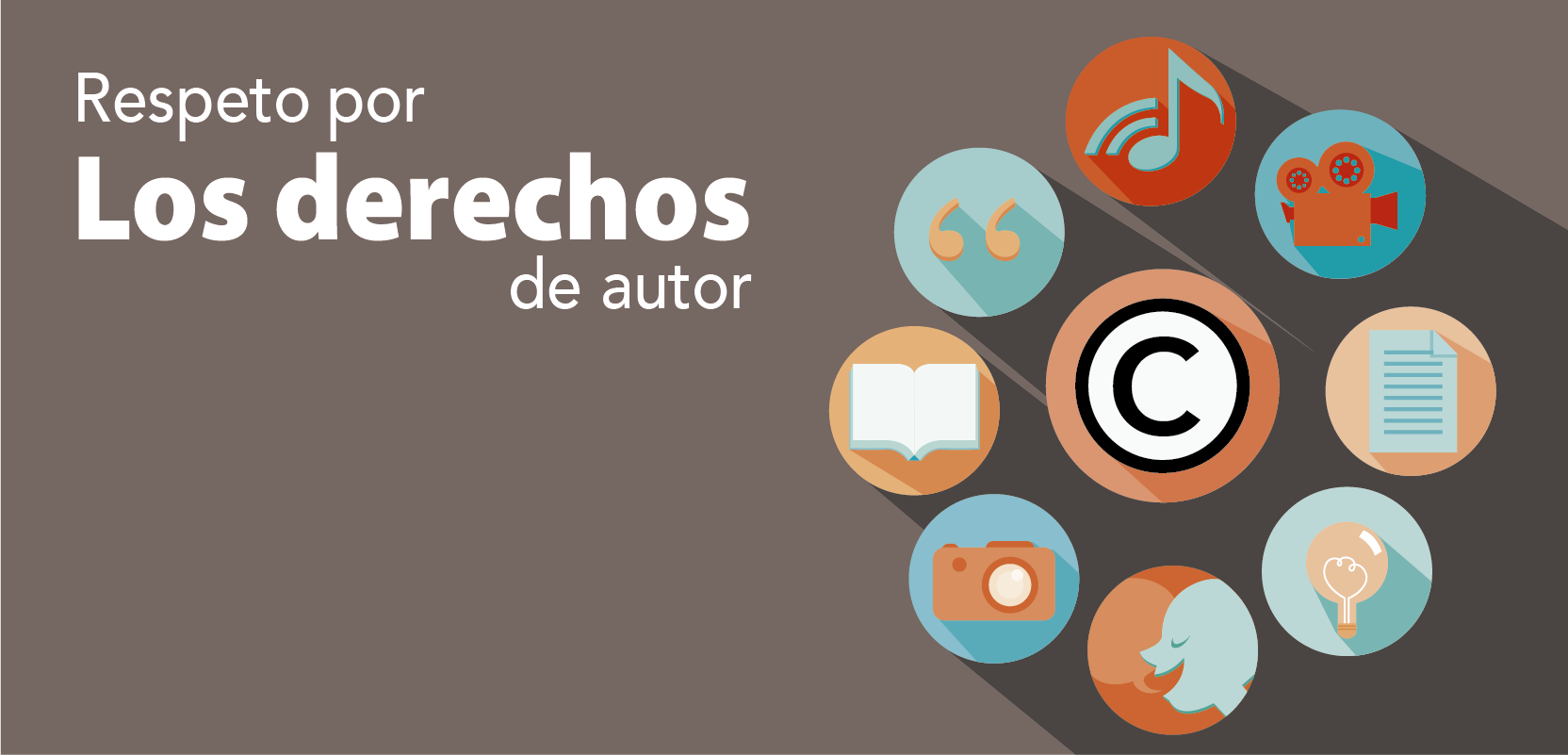
Una de las grandes ventajas que tienen los cursos en línea es la posibilidad de compartir con facilidad recursos que se encuentran en internet (artículos, presentaciones, imágenes), pero a muchos docentes les surge la siguiente interrogante: ¿puedo utilizar cualquiera de estos archivos impunemente?
La respuesta sencillamente es no. De hecho, es necesario respetar la autoría de todos estos recursos que encontramos en la web, pero, ¿cómo lograrlo? En primera instancia, revisando el tipo de licencia que tiene el archivo, en particular si el mismo fue colocado en un sitio de internet con los permisos respectivos y no se está violentando la autoría, para este caso se puede compartir el enlace fuente del recurso. Es importante recordar que toda imagen, documento, presentación o cualquier otro recurso tiene una licencia, la cual indica lo que se puede hacer o no con la obra.
Otro punto esencial para respetar los derechos de autor es examinar los manuales de estilo los cuales brindan las reglas para citación y referenciación de los insumos que encontremos en internet y que generalmente utilizamos para enriquecer las tareas y participaciones en trabajos colaborativos y foros de discusión. Si desea conocer aún más de los diferentes manuales de estilo puede revisar este enlace: http://repositorio.uned.ac.cr/multimedias/oa_plagio/manuales_de_estilo.html, en el cual va encontrar un recurso institucional que le puede ser de mucha ayuda. De igual forma hay que tomar en cuenta que algunos manuales de estilo son actualizados con cierta frecuencia, por lo que los criterios de estructura y citación de fuentes pueden ser diferente de una edición a otra, por lo que se recomienda basarse en la más reciente.
Respecting Copyright
One of the great advantages of online courses is the possibility to easily share resources found on the internet (articles, presentations, images), but many professors have the following question: Can I use any of these files with impunity? The answer is simply no. In fact, it is necessary to respect the authorship of all these resources found on the web, but how can I achieve it? In the first instance, reviewing the type of license that the file has, in particular if it was placed on an internet site with the respective permissions and the authorship is not being violated, then the source link of the resource can be shared. It is important to remember that every image, document, presentation, or any other resource has a license, which indicates what can be done or not with the files.
Another essential point to respect copyright is to examine the style guides, which provide the rules for citation and referencing of the inputs that we find on the internet and that we generally use to enrich the tasks and participations in collaborative works and discussion forums. If you want to know more about the different style manuals, you can check this link: http://repositorio.uned.ac.cr/multimedias/oa_plagio/manuales_de_estilo.html, where you will find an institutional resource that can be of great help to you. Similarly, it must be taken into account that some style manuals are updated with certain frequency, so that the structure criteria and citation of sources can be different from one edition to another, so it is recommended to rely on the most recent version.
